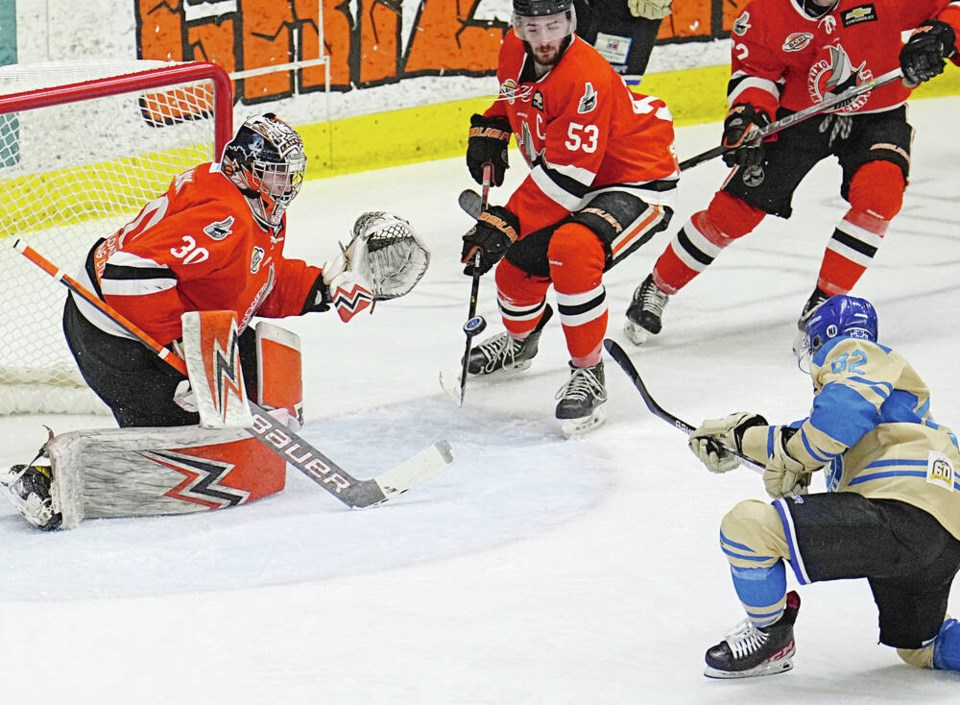The B.C. Hockey League is publicly pushing for Hockey Canada to make changes to how junior hockey is administered in this country.
The league has posted on its website the 35-page document entitled “Modernizing Junior Hockey in Canada — Supporting Two Junior Development Paths for Canadian Athletes” that it has sent to Hockey Canada, the governance review committee examining Hockey Canada’s structure, as well as the provincial body B.C. Hockey.
“It’s gotten to the point where we have to go public. We’ve tried behind-the-scenes to make it work and we haven’t gotten to first base,” BCHL commissioner Chris Hebb said.
It’s far from a new dispute. The BCHL dropped out of the Canadian Junior Hockey League, the umbrella group that oversees Junior A circuits in this country in conjunction with Hockey Canada, in April 2021. The league had sent a letter to the CJHL board of directors a year earlier, expressing various concerns, and had received no feedback.
Being out the CJHL keeps BCHL teams from competing for the Centennial Cup national championship and its players from taking part in the World Junior A Challenge and the CJHL top prospects’ game.
The BCHL, an 18-team loop that started its 2022-23 regular season last weekend, usually leads all the Canadian Junior A leagues in NCAA scholarships. On Tuesday, its website listed 129 committed players already this season.
BCHL’s stated goals with this most recent document include prompting greater promotion from Hockey Canada of the Junior A/NCAA route as a true alternative to playing in the WHL or the other major junior leagues.
They’re also looking for restrictions against 16- and 17-year-olds playing Junior A outside their home provinces being lifted. That was one of the main reasons they left the CJHL, which featured 10 leagues at the time.
“It is important to note that the writing of this white paper is not, in any way, related to the recent crisis surrounding Hockey Canada,” the BCHL document says.
“Our position was tabled with Hockey Canada long ago and has been ignored.
“However, given the appointment of former Supreme Court of Canada justice Thomas Cromwell to perform an independent review of Hockey Canada’s governance structure, the BCHL believes its long-held concerns are relevant to this review.
“Our objective is to have a frank, open and constructive discussion on the future of college-tracking junior hockey.”
Hockey Canada did not respond to a request for comment.
Brent Ladds, president of the CJHL, said in an email: “The document received will be researched to establish its genesis, and commented upon following a timeframe where the full CJHL board has had the ability to review it.”
The BCHL takes issues with Hockey Canada’s Canadian Development Model (CDM), which was implemented in 2006, making out Junior A to be a “feeder system” to major junior. The CDM states that Junior A provides “additional development for players 16 to 18 prior to advancing to major junior.”
“What we’d like is a review of the Canadian Development Model. Does it still hold water today? It was written at a time before college hockey wasn’t as prevalent as it now,” Hebb said. “Major junior is a great system. We’re just saying that it’s not the only system.”
With transfers, 16- and 17-year-olds can’t join a Junior A team in another province unless their family changes residence. In a league such as the WHL, those players are permitted to live with billets. The BCHL wants to be able to recruit players from coast-to-coast-to-coast. In major junior, the teams are restricted to their league’s region.



